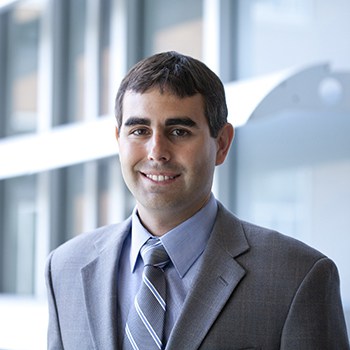
Constructing AI Literacy from the Ground Up
U-M CEE leads the way in integrating AI into undergraduate education

U-M CEE leads the way in integrating AI into undergraduate education
In a world where data and technology are reshaping every aspect of engineering, U-M CEE is working to integrate artificial intelligence (AI) into its undergraduate curriculum. Through enhanced coursework, early exposure, and hands-on experience, the department is preparing students to become people-centered engineers ready to lead in an increasingly AI-driven world.
CEE’s two undergraduate programs—B.S. in Civil Engineering and B.S. in Environmental Engineering—now feature coursework designed to build AI literacy from the ground up. This includes expanded AI content in courses such as CEE 303: Computational Methods for Engineers and Scientists, CEE 373: Statistical Methods for Data Analysis and Uncertainty Modeling, and CEE 375: Sensors and Data Acquisition.

“AI is no longer a buzzword—it’s an essential tool for solving modern infrastructure challenges,” said Jason McCormick, Arthur F. Thurnau Professor and Associate Department Chair of Undergraduate Programs. “We’re integrating AI in a way that aligns with our mission: giving students a people-centered education rooted in real-world impact. The goal isn’t just technical literacy; it’s equipping students to be adaptive, ethical, and forward-thinking engineers.”
In CEE 375, students engage directly with sensors and field instrumentation, learning how to collect, process, and make sense of complex datasets—skills that are foundational for AI applications in civil and environmental systems.

“A lot of learning happens when students see how AI integrates with their CEE domain knowledge. Data isn’t clean or convenient; it reflects the complexity of real environments, real infrastructure, and real needs,” said Branko Kerkez, Arthur F. Thurnau Associate Professor and Associate Department Chair of Research. “We guide students through that full arc—from collecting data with sensors to modeling and interpretation—so they develop not just technological skills, but AI judgment in the context of their broader CEE training.”
At the same time, CEE 303 introduces students to Python programming and computational thinking, helping them develop the coding fluency necessary for advanced AI and machine learning tools.

“Python is the new baseline,” said Jeff Scruggs, Professor and Associate Department Chair of Graduate Programs. “When students come in with a strong coding foundation, it opens the door to deeper, more creative problem-solving. We’re seeing them apply these skills in capstones, internships, and even research settings.”
Upper-level electives continue this path. One such course, CEE 554: Machine Learning for Infrastructure Systems, equips students with essential machine learning techniques to analyze complex data, enabling the development of smarter, more resilient infrastructure. Open to graduate students and senior undergraduates, the course integrates theoretical foundations with real-world case studies to prepare future engineers to lead in data-driven innovation and adapt civil infrastructure systems to evolving societal challenges.

“In civil and environmental engineering, we’ve traditionally relied on models built on simplifying assumptions. But in practice, those assumptions don’t always hold. In this course, students get a first-hand glimpse into how systems actually behave by working with real data,” said Neda Masoud, Associate Professor and course instructor. “They learn to base their designs on what the data is telling them, not just what the models say, so they can build solutions that are more robust, flexible, and grounded in reality.”
The department is also exploring the creation of a new course that would precede the mathematical methods sequence. This course would provide students with an introduction to Python, AI fundamentals, ethical AI use, and applications of generative AI, ensuring a common knowledge base and enabling AI integration across the curriculum.
“By making AI literacy part of our foundation, we’re not just preparing students for future jobs,” McCormick added. “We’re empowering them to shape what the future of civil and environmental engineering looks like.”
As the field continues to evolve, CEE reaffirms its commitment to offering an impactful education that combines deep technical expertise with human-centered design, ensuring that graduates leave with the skills, mindset, and ethical grounding to lead in an AI-driven future.

Marketing Communications Specialist
Department of Civil and Environmental Engineering